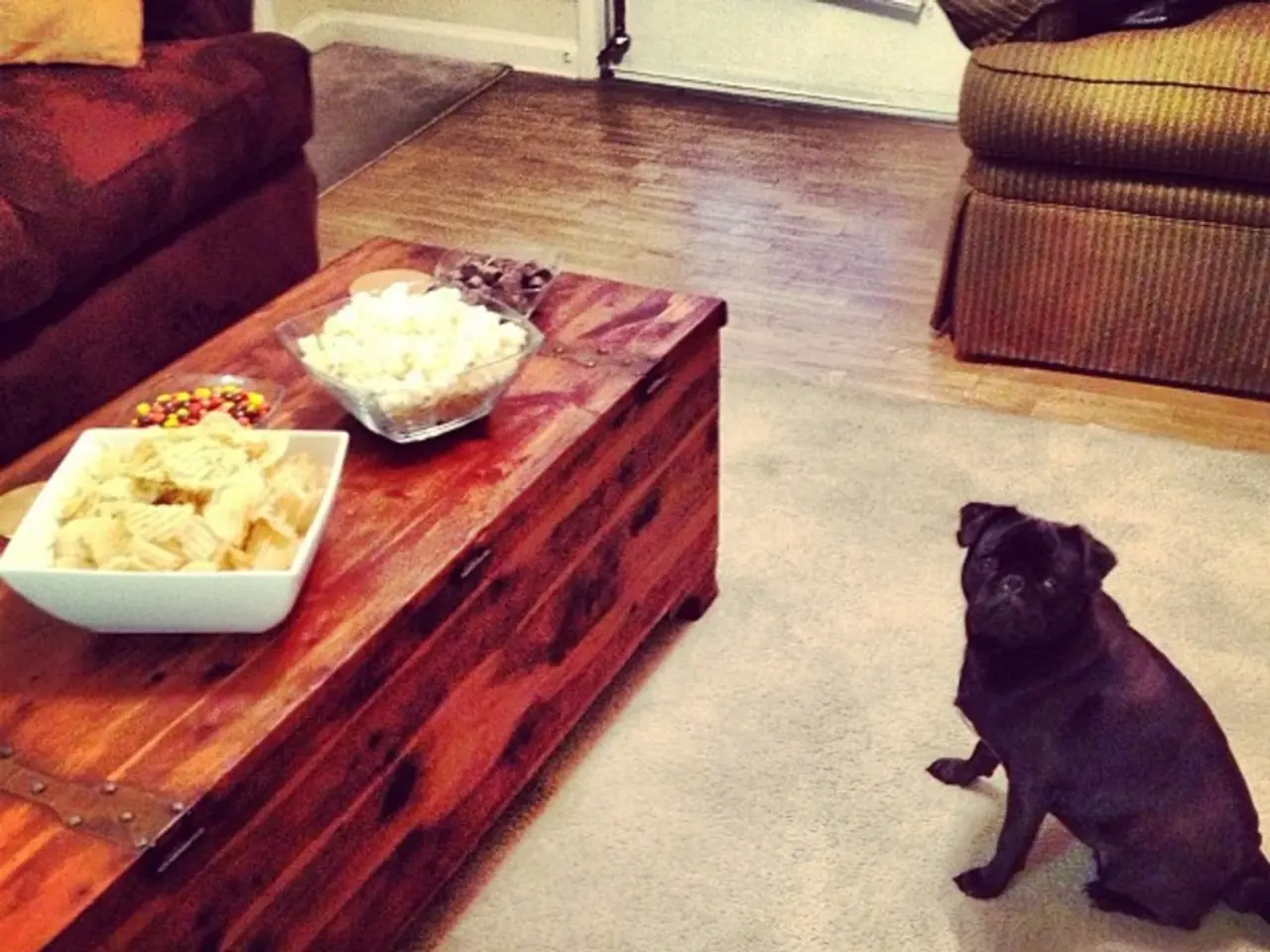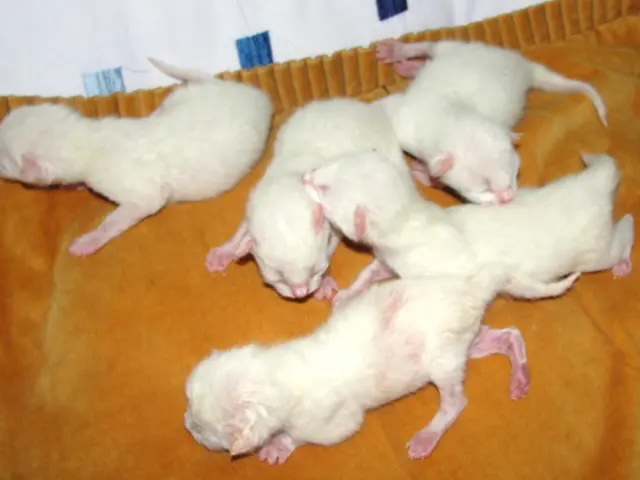Canine Attraction to Feline Feces: Is This Behavior Common Amongst Dogs?
In the world of pets, an unusual behaviour that has raised concerns among pet owners is coprophagia - dogs eating cat poop. This practice can be harmful to dogs due to the potential presence of intestinal parasites, harmful bacteria, and remnants of medications in cat feces.
These contaminants can cause infections, gastrointestinal problems, or even intestinal blockages, particularly if the dog ingests cat litter along with the feces. Eating cat poop also increases the risk of dogs contracting parasites such as roundworms, hookworms, and whipworms, which can lead to symptoms like diarrhea, weight loss, dehydration, and anemia.
Repeated exposure to feces from other animals, including cats, raises the chance of infections by pathogens like Giardia, E. coli, and others.
Preventing coprophagia in dogs involves several strategies. Firstly, providing a balanced diet ensures your dog is fed enough high-quality food to prevent nutrient deficiencies that might drive them to seek nutrient-rich feces.
Secondly, regular deworming using routine worming treatments can prevent parasites and break the cycle of malabsorption that may trigger coprophagia.
Thirdly, keeping the environment clean by promptly removing cat feces and cleaning litter boxes reduces your dog's access to potential sources of contamination.
Fourthly, supervising your dog, especially outdoors or near litter boxes, and redirecting their attention if they attempt to eat feces is crucial.
Training and deterrents, such as using commands or safe, vet-recommended deterrents that make feces less appealing to the dog, can also be effective.
Covered litter boxes or placing them on high shelves can also reduce the dog's temptation to eat cat feces. Placing the litter box in a room inaccessible to the dog can help prevent access.
If you suspect your dog has a compulsive poop-eating habit, it may indicate an underlying medical condition. In such cases, consulting a veterinarian is essential to rule out issues like gastrointestinal problems, parasites, or nutritional deficiencies.
A dog trainer can help reinforce good behaviour using positive reinforcement. If the dog just won't quit the habit, a vet should be consulted about potential treatments or tests.
In summary, eating cat poop exposes dogs to parasites, bacteria, and toxins harmful to their health. Prevention centres on proper nutrition, parasite control, environmental management, and behavioural training. Regular exposure to cat feces increases the risk of health issues for dogs, so taking preventive measures is crucial for the well-being of your furry friend.
- Incorporating health-and-wellness practices in pet care, such as providing a balanced diet and regular deworming treatments, can help prevent injuries or infections caused by coprophagia in dogs.
- With the rise of technology and science, there are now several therapies-and-treatments available to address compulsive dog behaviors like coprophagia, including training techniques and vet-recommended deterrents.
- Keeping a clean and organized lifestyle at home by promptly removing cat feces and maintaining a sanitary environment can significantly reduce the risk of health issues in pets.




